Daily HVAC service reports play a crucial role in maintaining HVAC systems and ensuring their optimal performance. By following best practices for recording and documenting service activities, technicians can provide accurate and efficient reports that contribute to the overall efficiency and longevity of the system.
To ensure the proper maintenance of HVAC systems, it is recommended to follow an HVAC maintenance checklist. This checklist should include a comprehensive list of each system or component that requires service, along with the date of the last service and when it will require servicing again. The checklist should be tailored to the specific needs of the HVAC system, taking into account factors such as the type of system, its operational lifespan, and how often it is used.
Regular maintenance of HVAC systems has several benefits, including lower energy costs, fewer repairs, longer equipment lifespan, improved safety, and better air quality. It is essential to prioritize consistent and accurate recording of service activities to reap these benefits.
Key Takeaways
- Follow an HVAC maintenance checklist to ensure thorough and comprehensive service reports.
- Regular maintenance of HVAC systems leads to lower energy costs, fewer repairs, and improved safety.
- Technicians should prioritize accurate and efficient recording of service activities for optimal system performance.
- Consider using field service scheduling software, like ServiceTitan, to streamline the scheduling process.
- Analyze daily service reports to identify trends, detect potential issues, and optimize maintenance strategies.
Importance of Daily Service Documentation
Accurate and comprehensive daily service documentation is essential for maintaining the peak performance of HVAC systems. When it comes to HVAC service documentation, attention to detail is crucial. Every maintenance activity, repair, or inspection should be recorded meticulously to ensure a complete record of the system’s health and performance over time.
By documenting daily service activities, technicians create a valuable resource for future reference. It allows them to track the history of maintenance and repairs, providing insights into recurring issues, patterns, and potential areas for improvement. With this information at hand, technicians can proactively address problems, prevent breakdowns, and optimize the performance of HVAC systems.
Furthermore, daily service documentation serves as a crucial tool for maintaining compliance with industry regulations and standards. It provides a record of all maintenance activities, ensuring that the necessary protocols have been followed and providing evidence in the event of an audit or inspection. This documentation also supports effective communication between technicians, supervisors, and clients, enabling everyone involved to stay informed about the current state of the HVAC system.
To streamline the process of daily service documentation, technicians can leverage technology solutions specifically designed for HVAC service reporting. These software platforms offer functionalities such as automated data entry, real-time updates, and customizable reporting templates. By digitizing the documentation process, technicians can save time, reduce errors, and enhance the overall efficiency of their daily service reporting tasks.
The importance of accurate and comprehensive daily service documentation cannot be overstated. It not only ensures optimal performance and longevity of HVAC systems but also boosts efficiency and compliance with industry regulations. With digital tools and a meticulous approach to documentation, HVAC technicians can take their service reporting to the next level.
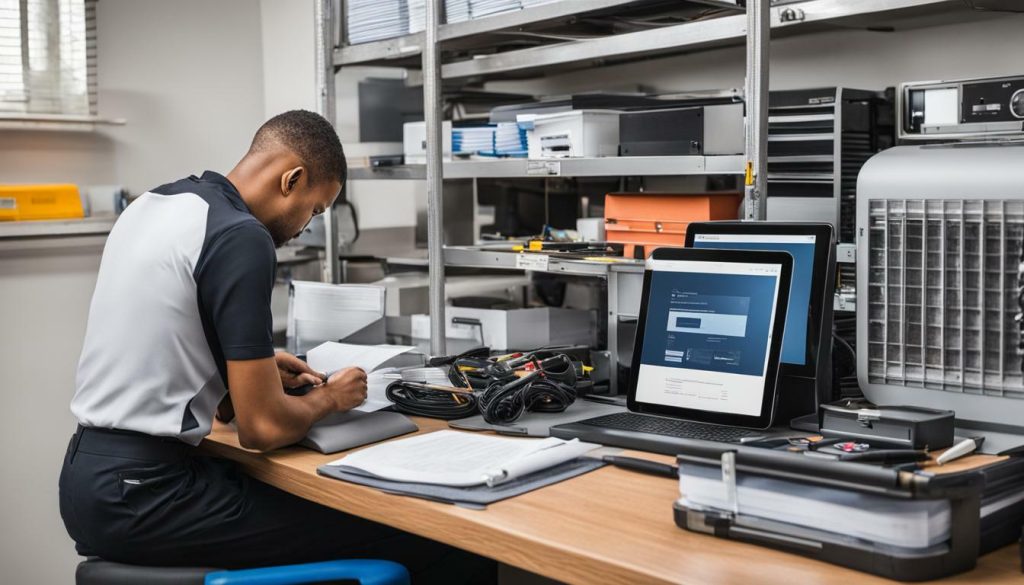
| Benefits of Daily Service Documentation |
|---|
| 1. Historical reference for maintenance and repairs |
| 2. Insight into recurring issues and patterns |
| 3. Proactive problem-solving and preventive maintenance |
| 4. Compliance with industry regulations and standards |
| 5. Effective communication with stakeholders |
Creating an HVAC Maintenance Checklist
A well-designed HVAC maintenance checklist is the foundation for effective daily service reporting. It ensures that all essential systems and components are inspected and serviced regularly, preventing potential issues and optimizing the performance of the HVAC system. When creating an HVAC maintenance checklist, it is crucial to consider the specific needs of the system, taking into account factors such as the type of system, its operational lifespan, and the frequency of use.
To create a comprehensive checklist, start by identifying each system or component that requires service. This may include inspecting and cleaning air filters, checking thermostat settings, examining electrical connections, lubricating moving parts, and testing safety controls, among other tasks. Each item on the checklist should be accompanied by the date of the last service and the date when it will require servicing again.
Organize the checklist in a logical and structured manner, grouping related tasks together. This will make it easier for technicians to follow and ensure that no crucial maintenance tasks are overlooked. Incorporate tables to provide clarity and facilitate data entry. For example, you can create a table that includes columns for system/component, service tasks, last service date, and next service date.
By developing a well-structured HVAC maintenance checklist, technicians will have a clear roadmap to follow during service visits. This will not only enhance their efficiency but also contribute to the overall longevity and performance of the HVAC system.
| System/Component | Service Tasks | Last Service Date | Next Service Date |
|---|---|---|---|
| Air Filters | Inspect and clean or replace if necessary | MM/DD/YYYY | MM/DD/YYYY + X months |
| Thermostat | Check accuracy and calibrate if needed | MM/DD/YYYY | MM/DD/YYYY + X months |
| Electrical Connections | Inspect for loose or damaged connections | MM/DD/YYYY | MM/DD/YYYY + X months |
| Moving Parts | Lubricate as necessary | MM/DD/YYYY | MM/DD/YYYY + X months |
| Safety Controls | Test for proper functioning | MM/DD/YYYY | MM/DD/YYYY + X months |
Why is an HVAC maintenance checklist important?
An HVAC maintenance checklist is essential for several reasons. First and foremost, it ensures that all necessary maintenance tasks are completed regularly, reducing the risk of unexpected breakdowns and costly repairs. Additionally, it helps technicians stay organized and focused during service visits, enabling them to provide efficient and thorough maintenance.
The checklist also serves as a valuable reference for tracking the service history of the HVAC system. By recording the dates of each maintenance task, technicians can easily identify when a particular service was last performed and when it needs to be scheduled again. This proactive approach helps prevent neglect or oversight of essential maintenance activities.
Overall, an HVAC maintenance checklist is a powerful tool that promotes the longevity, efficiency, and optimal performance of HVAC systems. It is an indispensable resource for both technicians and facility managers, providing a structured framework for maintaining and servicing these critical systems.
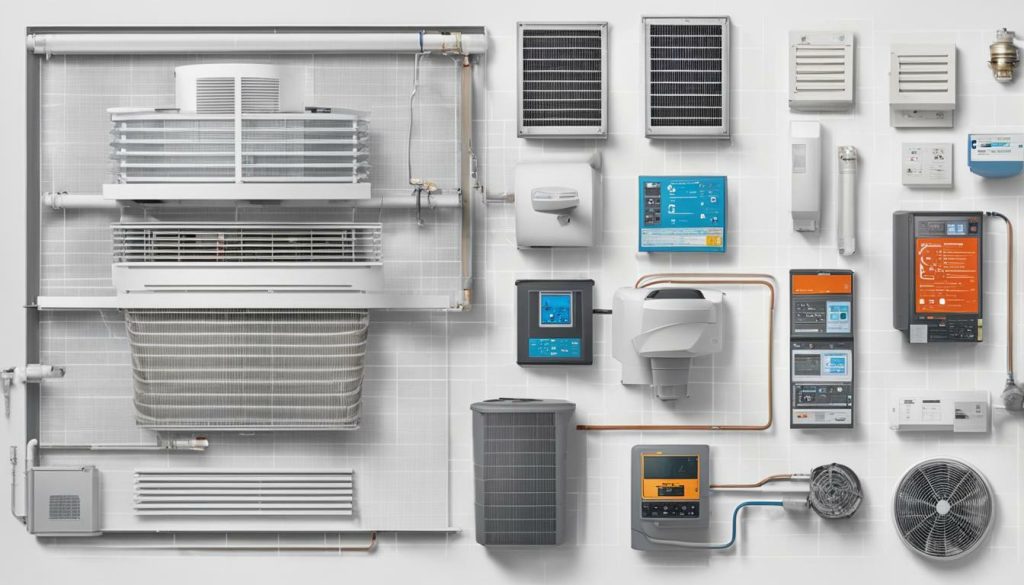
Key Components of an HVAC Maintenance Checklist
An HVAC maintenance checklist should encompass a detailed list of systems and components that require regular service. This ensures that all essential areas of the HVAC system are inspected and maintained to ensure optimal performance and longevity. A comprehensive checklist should include the following key components:
- Filters: Check and replace air filters regularly to maintain proper airflow and prevent dirt and debris buildup that can affect system efficiency.
- Coils: Clean evaporator and condenser coils to remove dirt and debris, promoting efficient heat transfer and preventing system strain.
- Thermostat: Test thermostat functionality and calibrate if necessary to ensure accurate temperature control.
- Electrical Connections: Inspect electrical connections, wiring, and terminals for signs of wear, corrosion, or loose connections that can lead to system malfunctions or safety hazards.
Additionally, it is important to include the following components in your HVAC maintenance checklist:
- Refrigerant Levels: Monitor and adjust refrigerant levels as needed to maintain optimal system performance and prevent compressor damage.
- Ductwork: Inspect and clean ductwork to remove dust, debris, and potential blockages that can impede airflow and reduce system efficiency.
- Belts and Pulleys: Check belts and pulleys for signs of wear or tension issues, replacing or adjusting as necessary to prevent system malfunctions.
- Condensate Drain: Clear condensate drain lines to prevent clogs and water damage.
Remember, each HVAC system may have unique requirements, so it is essential to tailor your checklist based on the specific needs and characteristics of the system you are servicing. Regularly following this comprehensive checklist will help ensure that all vital components are properly maintained, reducing the risk of breakdowns, optimizing energy efficiency, and extending system lifespan.
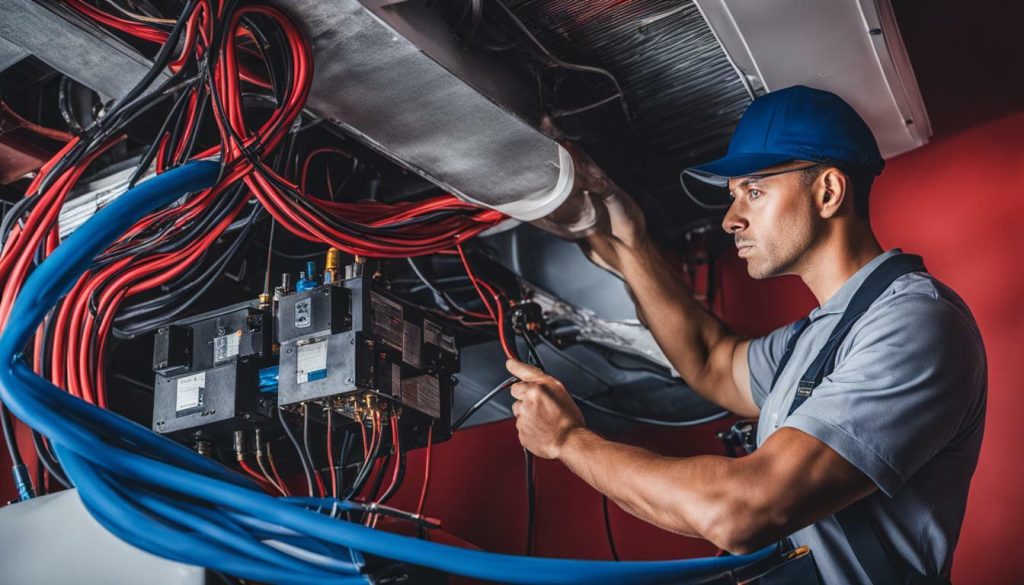
Benefits of Regular HVAC Maintenance
Regular HVAC maintenance, as documented in daily service reports, brings a wide range of advantages to both homeowners and businesses. By diligently following an HVAC maintenance checklist, technicians can ensure that essential maintenance tasks are consistently performed, leading to optimal system performance and longevity.
One of the primary benefits of regular HVAC maintenance is lower energy costs. A well-maintained system operates more efficiently, using less energy to achieve the desired temperature. This not only reduces utility bills but also helps minimize the environmental impact of excessive energy consumption.
Moreover, regular maintenance helps prevent costly repairs. By promptly identifying and addressing minor issues during routine service visits, technicians can prevent them from escalating into major problems that require extensive repairs or component replacements. This proactive approach not only saves money but also minimizes downtime and inconvenience for homeowners and businesses.
Furthermore, consistent service reporting contributes to prolonging the lifespan of HVAC equipment. Regular maintenance ensures that all components are inspected, cleaned, and lubricated as needed, reducing wear and tear and extending their operational lifespan. This can result in significant cost savings by delaying the need for expensive equipment replacements.
| Benefits of Regular HVAC Maintenance |
|---|
| Lower energy costs |
| Fewer repairs |
| Longer equipment lifespan |
| Improved safety |
| Better air quality |
When it comes to safety, regular HVAC maintenance plays a crucial role. Technicians can identify potential safety hazards such as gas leaks, electrical issues, or faulty ventilation systems during routine inspections. Addressing these issues promptly ensures the wellbeing of occupants and reduces the risk of accidents or health problems.
Lastly, regular maintenance contributes to better indoor air quality. Dust, allergens, and pollutants can accumulate in HVAC systems over time, posing a risk to the health and comfort of occupants. By regularly cleaning and replacing filters and ensuring proper ventilation, technicians can prevent the circulation of contaminated air, creating a healthier and more comfortable living or working environment.
By prioritizing regular HVAC maintenance and documenting it in daily service reports, homeowners and businesses can enjoy the numerous benefits of a well-maintained HVAC system. Lower energy costs, fewer repairs, longer equipment lifespan, improved safety, and better air quality are just a few of the advantages that diligent maintenance brings.
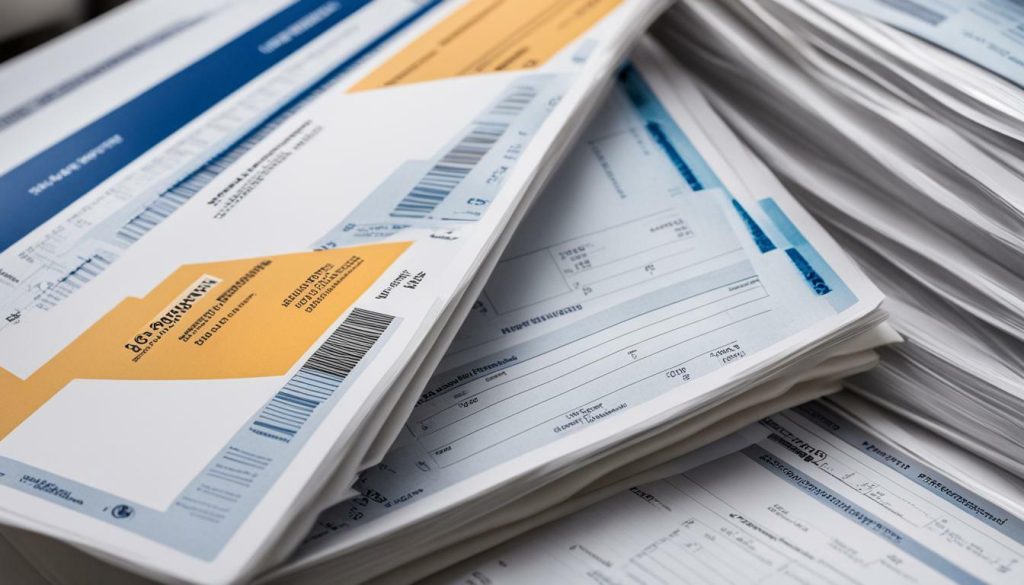
Scheduling Service Calls for Technicians
Efficiently scheduling service calls is crucial for maximizing technician productivity and delivering prompt HVAC maintenance services. To ensure smooth operations and efficient use of time, it is important to follow a structured approach when managing service requests. Here are some key tips to help you streamline your scheduling process:
- Assess technician capacity: Evaluate the workload and availability of your technicians to ensure they can handle incoming service calls. Consider factors such as skillset, location, and expertise to assign the right technician to each job.
- Plan ahead: Develop a scheduling routine that allows for advanced planning. Anticipate future service requirements based on maintenance schedules and recurring maintenance needs, ensuring that appointments are made well in advance.
- Categorize service calls: Classify incoming service calls based on priority levels, customer preferences, or urgency. This allows you to allocate resources efficiently and address critical issues promptly.
- Favor morning appointments: Schedule high-priority service calls during the morning hours when technicians are fresh and customers are likely to be available. This helps ensure timely service delivery and customer satisfaction.
- Leverage service contracts: Encourage customers to sign service contracts that provide recurring revenue for your business. These contracts can help stabilize your workflow by guaranteeing regular service appointments.
Implementing these strategies will help you optimize your scheduling process, enhance customer satisfaction, and maximize the productivity of your HVAC technicians. By efficiently managing service calls, you can ensure that maintenance tasks are carried out promptly, reducing the risk of system failures and enhancing the longevity of HVAC systems.
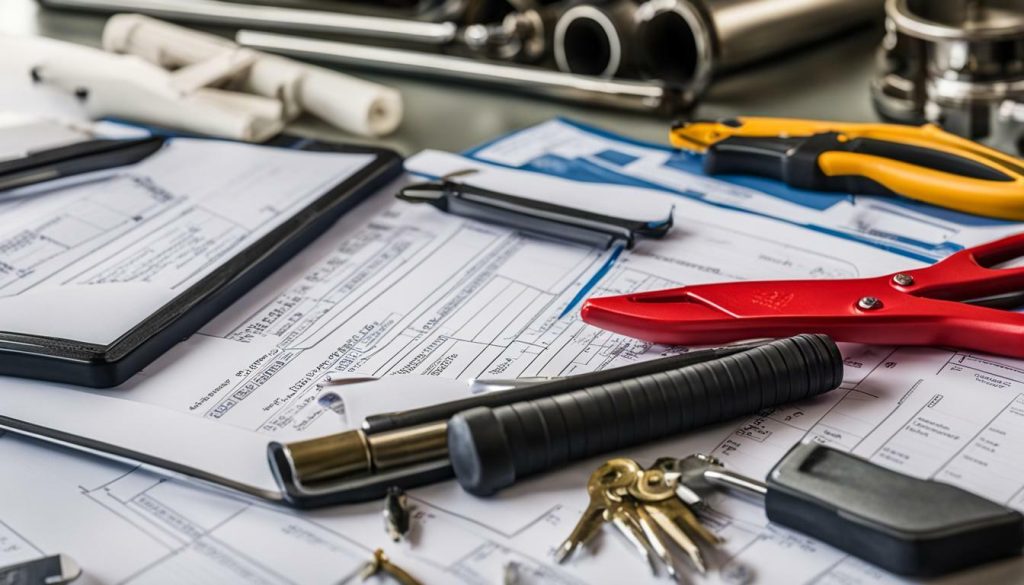
Table: Sample Technician Capacity and Availability
| Technician | Monday | Tuesday | Wednesday | Thursday | Friday |
|---|---|---|---|---|---|
| John | Available | Available | Unavailable | Unavailable | Available |
| Sarah | Available | Available | Available | Unavailable | Unavailable |
| Michael | Unavailable | Available | Available | Unavailable | Available |
Streamlining Scheduling with Field Service Software
Field service scheduling software can revolutionize the way HVAC service reports are managed, ensuring seamless coordination between technicians and their daily tasks. With the help of advanced automation and real-time updates, this software optimizes the scheduling process, resulting in improved efficiency and customer satisfaction.
By utilizing field service software, HVAC technicians can easily access their daily service reports and stay on top of their assigned tasks. The software provides a centralized platform where technicians can view and update their schedules, ensuring they have all the necessary details and resources to complete their service calls successfully.
One of the key benefits of using field service software is its ability to streamline the dispatching process. With automated scheduling, incoming service calls can be categorized based on urgency, technician availability, and geographic proximity. This ensures that urgent issues are addressed promptly, and technicians are assigned to service calls in the most efficient manner.
Leveraging Technological Tools for Data Analysis
Technological tools can unlock valuable insights from daily HVAC service reports, leading to informed decision-making and proactive maintenance. With the aid of these tools, technicians can analyze data trends, identify potential issues, and optimize maintenance strategies to ensure optimal system performance. By harnessing the power of data analysis, HVAC service providers can enhance their service offerings and deliver exceptional value to their customers.
One of the primary benefits of using technological tools for data analysis is the ability to track and monitor key performance metrics. By measuring and analyzing factors such as energy consumption, system efficiency, and equipment lifespan, technicians can identify opportunities for improvement and implement targeted maintenance strategies. This data-driven approach helps to prevent costly breakdowns, extend the life of HVAC systems, and maximize energy efficiency.
Furthermore, leveraging technological tools allows for the identification of recurring issues and patterns. By analyzing service reports over time, technicians can pinpoint common problems, determine their root causes, and implement proactive measures to prevent their recurrence. This not only saves time and resources but also enhances customer satisfaction by minimizing system downtime and disruptions.
| Benefits of Technological Tools for Data Analysis |
|---|
| Ability to track and monitor key performance metrics |
| Identification of recurring issues and patterns |
| Improved resource allocation and scheduling |
| Enhanced predictive maintenance capabilities |
Another advantage of leveraging technological tools is the ability to optimize resource allocation and scheduling. By analyzing service reports and monitoring technician performance, HVAC service providers can identify areas where resources may be underutilized or overloaded. This insight allows for more efficient scheduling of service calls, ensuring that technicians are deployed where they are needed most, and maximizing overall productivity.
Finally, technological tools enable HVAC service providers to enhance their predictive maintenance capabilities. By analyzing historical service reports and equipment performance data, technicians can develop predictive maintenance models that anticipate when maintenance will be required. This proactive approach allows for better planning, reduced emergency repairs, and improved system reliability.

Ensuring Accuracy and Consistency in Reporting
Accurate and consistent HVAC service reporting is essential for effective maintenance and troubleshooting of HVAC systems. To ensure the reliability of your service reports, it is crucial to follow certain guidelines and best practices. Thorough documentation is key, providing a detailed account of the tasks performed, observations made, and any issues encountered during the service visit.
Using clear and concise language in your reports helps to eliminate confusion and ensures that all information is easily understood by stakeholders. It is also important to adhere to standardized formats to maintain consistency across different service reports. This allows for easier comparison and analysis of data over time, highlighting trends and potential areas for improvement.
Timely submission of service reports is another crucial aspect of accurate reporting. Submitting reports promptly after each service visit ensures that the information is fresh and relevant. It also allows for timely reviews and follow-up actions, maximizing the impact of the report in addressing any maintenance or repair needs.
Table: Best Practices for Accurate and Consistent HVAC Service Reporting
| Best Practices | Benefits |
|---|---|
| Thorough documentation | Provides a comprehensive record of service activities |
| Clear and concise language | Ensures easy understanding of the report |
| Standardized formats | Facilitates easy comparison and analysis of data |
| Timely submission | Prompts timely reviews and follow-up actions |
By following these best practices, you can ensure the accuracy and consistency of your HVAC service reporting. This will not only help in maintaining optimal system performance but also enable you to make data-driven decisions for improved maintenance strategies and troubleshooting.
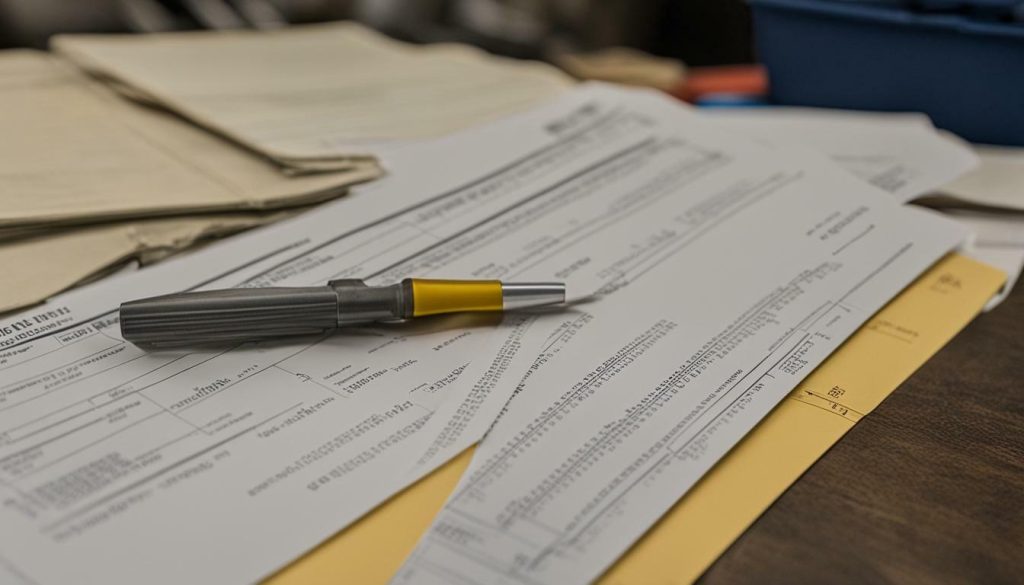
Reviewing and Analyzing Service Reports
Reviewing and analyzing daily service reports can provide valuable insights into HVAC system performance and identify areas for optimization. These reports serve as a record of maintenance activities, documenting the actions taken, any issues encountered, and the overall condition of the system. By thoroughly examining these reports, you can gain a deeper understanding of your HVAC system’s functionality and pinpoint potential areas of improvement.
One way to utilize service reports is by tracking performance metrics. Analyzing data such as energy consumption, temperature variances, and equipment runtime can help identify patterns or deviations that may indicate inefficiencies or underlying problems. This information can then be used to make data-driven decisions about system adjustments or upgrades to maximize performance and energy efficiency.
| Benefits of Reviewing Service Reports |
|---|
| Identify recurring issues |
| Track performance metrics |
| Make data-driven recommendations |
Furthermore, reviewing service reports allows for the identification of recurring issues. If the same problem continues to arise, it may indicate a systemic issue that needs to be addressed. By addressing these recurring issues, you can prevent further damage and minimize costly repairs in the long run.
To streamline the analysis process, consider leveraging technological tools that offer data visualization and reporting capabilities. These tools can help simplify the interpretation of complex data sets, making it easier to identify trends and patterns. By implementing continuous improvement strategies based on the insights gained from service reports, you can enhance the long-term performance and reliability of your HVAC system.

In conclusion, the review and analysis of daily service reports are essential for optimizing HVAC system performance. By leveraging the valuable data captured in these reports, you can identify areas for improvement, track performance metrics, and make informed decisions to enhance system functionality. Incorporating the use of technological tools to simplify data analysis and visualization can further streamline the process. Remember, utilizing service reports as a tool for continuous improvement is key to ensuring the longevity and efficiency of your HVAC system.
Implementing Continuous Improvement Strategies
Daily maintenance reports facilitate a culture of continuous improvement and drive ongoing optimization of HVAC systems. By regularly documenting service activities and tracking maintenance tasks, technicians can identify recurring issues, evaluate performance metrics, and make data-driven recommendations for system enhancements. To effectively implement continuous improvement strategies, consider the following:
Evaluate and Analyze Reports
Review daily maintenance reports to identify patterns, trends, and areas for improvement. Analyze data to uncover potential issues or inefficiencies, such as recurring breakdowns or high energy consumption. By understanding these patterns, you can prioritize necessary actions and allocate resources effectively.
Create Feedback Loops
Establish a feedback loop with technicians to encourage open communication and information sharing. Encourage them to provide insights on challenges faced during maintenance tasks and suggestions for improvement. By fostering a culture of collaboration, you can leverage the expertise of your technicians to drive innovation and refine maintenance strategies.
Invest in Education and Training
Continuous improvement relies on a well-trained and knowledgeable workforce. Provide ongoing education and training opportunities for technicians to enhance their skills and stay up-to-date with the latest industry advancements. This investment in professional development will not only improve the quality of service but also empower technicians to contribute to the improvement of HVAC systems.
By implementing these strategies, HVAC service providers can optimize system performance, prolong equipment lifespan, and maximize customer satisfaction. Continuously refining maintenance practices based on data and feedback will result in more efficient and reliable HVAC systems.
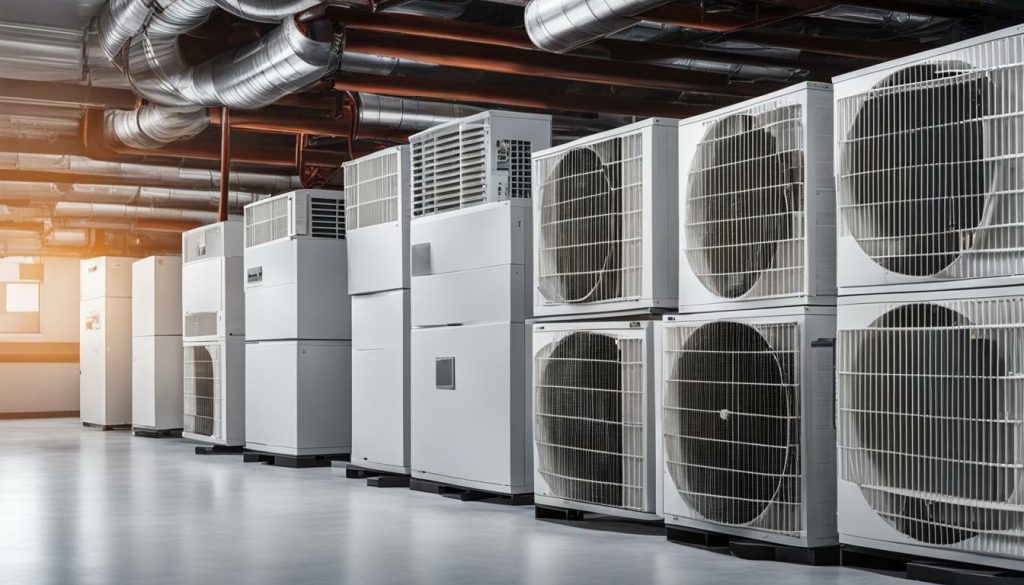
| Benefits of Implementing Continuous Improvement Strategies |
|---|
| 1. Enhanced system performance |
| 2. Extended equipment lifespan |
| 3. Increased energy efficiency |
| 4. Reduced downtime and costly repairs |
| 5. Improved customer satisfaction |
Conclusion
Daily HVAC service reports are an integral part of maintaining HVAC systems at their best, and technicians should adhere to best practices to ensure accurate and efficient reporting. To ensure the proper maintenance of HVAC systems, it is recommended to follow an HVAC maintenance checklist. This checklist should include a comprehensive list of each system or component that requires service, along with the date of the last service and when it will require servicing again. The checklist should be tailored to the specific needs of the HVAC system, taking into account factors such as the type of system, its operational lifespan, and how often it is used.
Regular maintenance of HVAC systems has several benefits, including lower energy costs, fewer repairs, longer equipment lifespan, improved safety, and better air quality. By keeping detailed daily service reports, technicians can track the maintenance activities performed, identify recurring issues, and make data-driven recommendations for system improvements. These reports provide valuable insights into the system’s performance, enabling proactive measures to be taken to prevent potential problems and optimize its overall efficiency.
When scheduling service calls, it is important to evaluate technician capacity, plan ahead, categorize incoming service calls, favor morning appointments, and take advantage of service contracts to secure recurring revenue. Leveraging technological tools like ServiceTitan’s field service scheduling software can automate and streamline the scheduling process, making it more efficient and effective. This software provides real-time updates for both technicians and customers, enhancing communication and ensuring that service calls are scheduled and completed in a timely manner.
In conclusion, by following best practices for daily HVAC service reports, technicians can contribute to the optimum performance and longevity of HVAC systems. Accurate and efficient reporting, combined with a comprehensive maintenance checklist, allows for the identification of potential issues, the implementation of continuous improvement strategies, and the delivery of exceptional service. Prioritizing regular maintenance and adhering to these practices will result in cost savings, improved system reliability, and increased customer satisfaction, making it a win-win situation for all stakeholders involved.
FAQ
What is an HVAC maintenance checklist?
An HVAC maintenance checklist is a comprehensive list of each system or component that requires service, along with the date of the last service and when it will require servicing again.
Why is regular maintenance of HVAC systems important?
Regular maintenance of HVAC systems has several benefits, including lower energy costs, fewer repairs, longer equipment lifespan, improved safety, and better air quality.
How can I schedule service calls effectively?
When scheduling service calls, it is important to evaluate technician capacity, plan ahead, categorize incoming service calls, favor morning appointments, and take advantage of service contracts to secure recurring revenue.
How can field service scheduling software streamline the scheduling process?
Field service scheduling software, such as ServiceTitan, can automate and streamline the scheduling process, making it more efficient and effective.
What are the best practices for daily HVAC service reports?
The best practices for daily HVAC service reports include ensuring accuracy and consistency in reporting, leveraging technological tools for data analysis, and implementing continuous improvement strategies based on report findings.
How can daily service documentation contribute to HVAC system efficiency?
Daily service documentation contributes to HVAC system efficiency by keeping detailed records of maintenance activities, which help in identifying trends, detecting potential issues, and optimizing maintenance strategies for improved system performance.
What should be included in an HVAC maintenance checklist?
An HVAC maintenance checklist should include a comprehensive list of systems and components that technicians need to inspect and service regularly to maintain optimal performance.
Why is reviewing and analyzing service reports important?
Reviewing and analyzing service reports allows technicians to identify recurring issues, track performance metrics, and make data-driven recommendations for system improvements.
How can technicians ensure accuracy and consistency in HVAC service reporting?
Technicians can ensure accuracy and consistency in HVAC service reporting by practicing thorough documentation, using clear and concise language, following standardized formats, and submitting reports in a timely manner.
What are the benefits of leveraging technological tools for data analysis of daily HVAC service reports?
Leveraging technological tools for data analysis of daily HVAC service reports can help identify trends, detect potential issues, and optimize maintenance strategies for improved system performance.





0 Comments